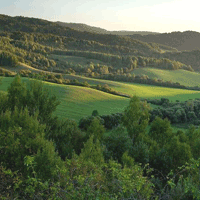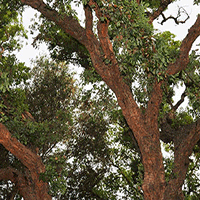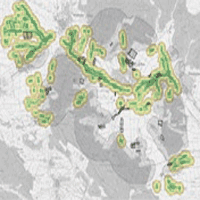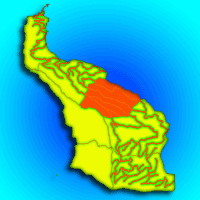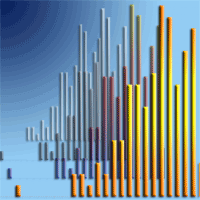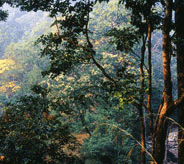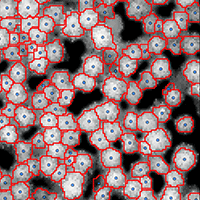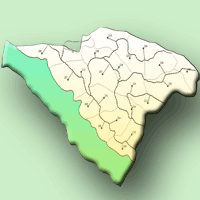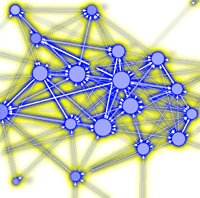
Application of indicators network analysis to support local forest management plan development: a case study in Molise, Italy
G Santopuoli (1) , A Requardt (2), M Marchetti (3)
iForest - Biogeosciences and Forestry, Volume 5, Issue 1, Pages 31-37 (2012)
doi: https://doi.org/10.3832/ifor0603-009
Published: Feb 27, 2012 - Copyright © 2012 SISEF
Research Articles
Abstract
Forest management plans and Criteria and Indicators are the most important tools to support sustainable forest management. Due to the important role of forests in contributing to humans’ well being through the numerous ecosystem services they provide, in the last two decades many efforts have been made to develop new forest management tools at different scale levels. Territorial Forest Plan and Criteria and Indicators for SFM are considered as the innovative tools to support forest management. A participatory approach, providing a better knowledge of social framework conditions and trends on local markets, is considered the focus of new forest management tools. Territorial Forest Plan allows to identify the main function of forest stands at territorial level, based on both forest type and stakeholders’ opinions. On the other hand, the Indicators Network can be helpful to support forest management because it allows to identify the main causal paths and crucial linkages involving the indicators and to offer decision makers the opportunity to manage the forest ecosystem in a more holistic way. In this work, an application of indicators network analysis to support Territorial Forest Plan development in the Nature 2000 site has been studied. Based on the results obtained, an integrated use of both approaches may provide an added value to sustainable forest management.
Keywords
Participatory, Forest planning, Indicators network, Sustainable forest management
Authors’ Info
Authors’ address
Dipartimento di Scienze Animali, Vegetali e dell’Ambiente (SAVA), Università del Molise, I-86100 Campobasso (Italy)
European Forest Institute, Central European Regional Office and Observatory for European Forests (EFICENT-OEF), 8 rue Baron Louis, F-54000 Nancy (France)
Dipartimento di Scienze e Tecnologie per l’Ambiente e il Territorio (STAT), Università del Molise, c.da Fonte Lappone, I-86090 Pesche, IS (Italy)
Corresponding author
Paper Info
Citation
Santopuoli G, Requardt A, Marchetti M (2012). Application of indicators network analysis to support local forest management plan development: a case study in Molise, Italy. iForest 5: 31-37. - doi: 10.3832/ifor0603-009
Academic Editor
Agostino Ferrara
Paper history
Received: Sep 01, 2011
Accepted: Jan 03, 2012
First online: Feb 27, 2012
Publication Date: Feb 27, 2012
Publication Time: 1.83 months
Copyright Information
© SISEF - The Italian Society of Silviculture and Forest Ecology 2012
Open Access
This article is distributed under the terms of the Creative Commons Attribution-Non Commercial 4.0 International (https://creativecommons.org/licenses/by-nc/4.0/), which permits unrestricted use, distribution, and reproduction in any medium, provided you give appropriate credit to the original author(s) and the source, provide a link to the Creative Commons license, and indicate if changes were made.
Web Metrics
Breakdown by View Type
Article Usage
Total Article Views: 56801
(from publication date up to now)
Breakdown by View Type
HTML Page Views: 47147
Abstract Page Views: 3594
PDF Downloads: 4430
Citation/Reference Downloads: 37
XML Downloads: 1593
Web Metrics
Days since publication: 5044
Overall contacts: 56801
Avg. contacts per week: 78.83
Citation Metrics
Article Citations
Article citations are based on data periodically collected from the Clarivate Web of Science web site
(last update: Mar 2025)
Total number of cites (since 2012): 13
Average cites per year: 0.93
Publication Metrics
by Dimensions ©
Articles citing this article
List of the papers citing this article based on CrossRef Cited-by.
References
Esperienze innovative di pianificazione forestale sovraziendale: il Piano Forestale di Indirizzo Territoriale dell’Altopiano di Asiago
Gscholar
European forest types. Categories and types for sustainable forest management reporting and policy. Technical Report No 9/2006, European Environment Agency, Luxembourg, pp. 114.
Gscholar
Introduction to social network methods. University of California, Riverside, CA, USA.
Gscholar
Improved pan-European indicators for sustainable forest management, as adopted by the MCPFE Expert Level Meeting. Vienna (Austria) 7-8 October 2002, pp. 6.
Gscholar
Development and testing of a criteria and indicators system for sustainable forest management at the local level: case study at the Haliburton Forest & Wild Life Reserve Ltd., Canada. In: “European University Studies: Series 42, Ecology, Environmental Studies”, vol. XIV. Frankfurt am Main, pp. 189.
Gscholar
Guidelines for developing, testing and selecting criteria and indicators for sustainable forest management: a C&I developer’s reference. The Criteria and Indicators Toolbox Series, No. 1. CIFOR, Bogor, Indonesia, pp. 183.
Gscholar
Pan-european criteria and indicators for sustainable forest management: networking structures and data potentials of international data sources. Universitätsbibliothek, PhD thesis, University of Hamburg, Germany, pp. 245
Gscholar
Reporting on pan-European criteria and indicators for sustainable forest management - experiences from Liechtenstein 2003. Work Report of the Institute for World Forestry 2007/2, Hamburg, Germany, pp. 28
Gscholar
Forest principles. Report of the United Nations Conference on Environment and Development. Rio de Janeiro (Brazil) 3-14 June 1992. UN A/CONF. 151/26, vol. 3.
Gscholar


